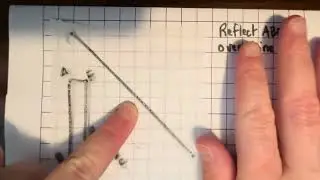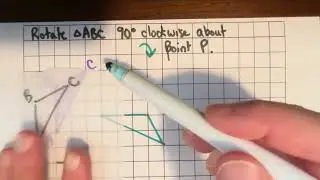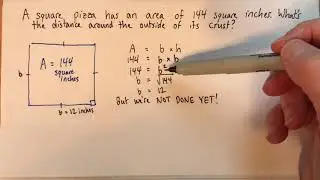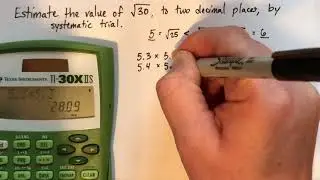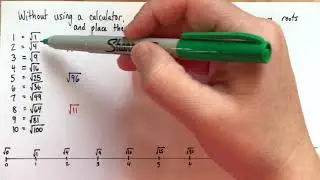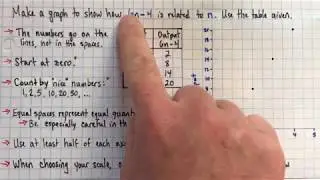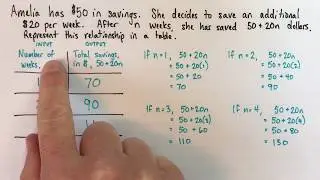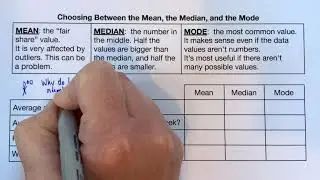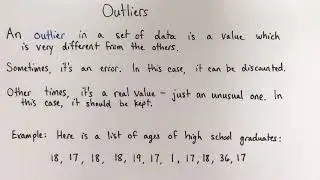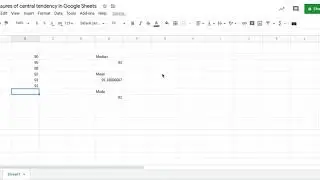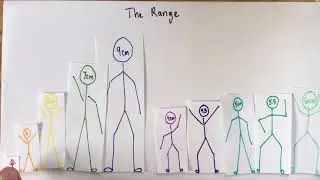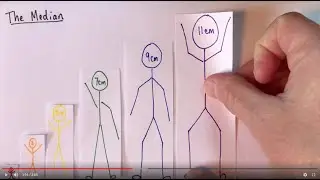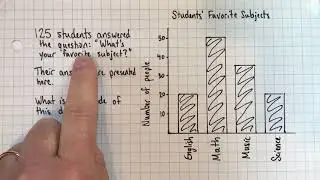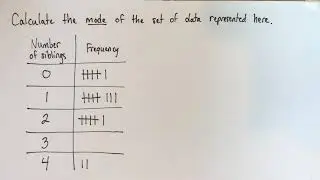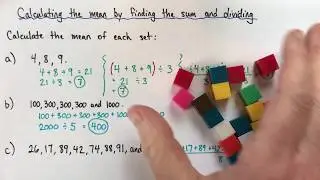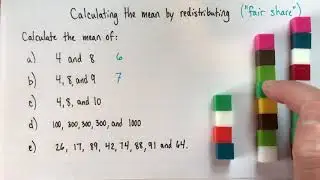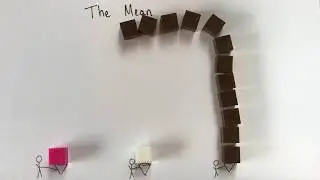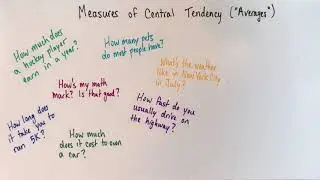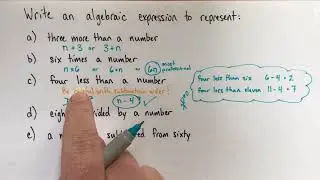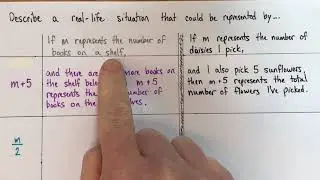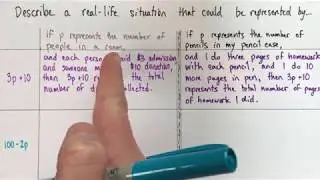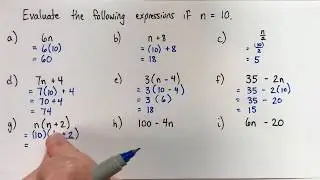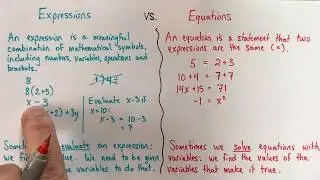How to create a real-life situation to match an algebraic expression (with one operation)
Need to create a real-life situation to match an algebraic expression? I’ll show you how.
We’ll consider the expressions m+5 and m/2. To help you understand the process as well as my answers, I’ll create two different situations for each.
I suggest starting by defining your variable. What will m represent? I would encourage you to choose something very ordinary, because that will make it easier to come up with reasons to do operations to it! I'll let it represent "the number of books on a shelf" for one example, and "the number of daisies I picked" for the other.
Next, look at the expression and think about the operations it entails. For example, with m+5, we need to create a reason to add 5 to our quantities represented by m. For example, what might five more than the number of books on a shelf represent? Well, if there were five more books somewhere else, then the total number would be m+5. With m/2, what might half the number of daisies be meaningful? Well, if I split the daisies equally between two vases, then I'd have m/2 daisies in each! I’ll discuss these examples of situations and a couple more.
In addition to helping you create a situation, I’ll give you tips on how to describe your situation clearly in writing.
This video is part of a playlist on representing linear relationships. Learn how to write expressions and equations, how to make tables of values, what ordered pairs are, how to find a missing value in an ordered pair, how to write precise descriptions of linear relationships, and how to create graphs. See more here: • Representing linear relationships








